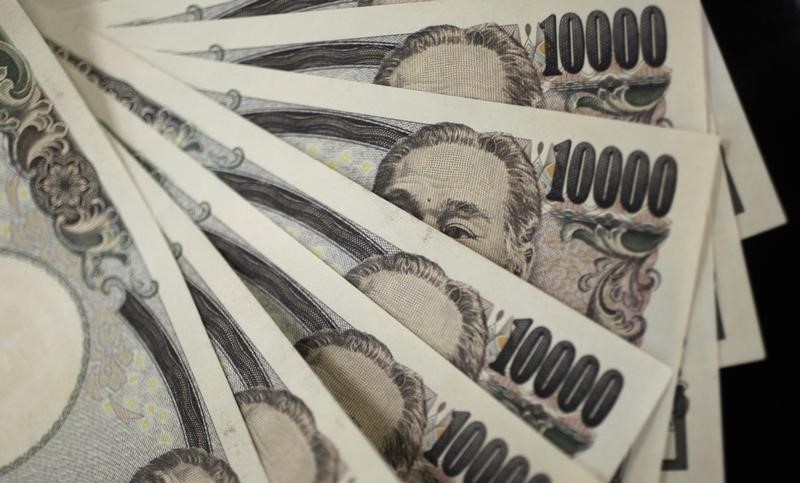Investing.com - The yen retraced earlier gains on Monday in Asia after better than expected industrial output figures and as investors looked ahead to a packed week of central bank meetings and a U.S. presidential race heading for the final stretch.
USD/JPY changed hands at 104.72, down 0.01%, while AUD/USD traded at 0.7591, down 0.13%. GBP/USD was quoted down 0.10% at 1.2180.
Japan reported provisional industrial production data for October as unchanged from the previous month in September, better than the 1.5% fall seen, and after a 1.3% gain in August. As well, retail sales for September fell 1.9% year-on-year as largely expected, marking the seventh straight drop after a 2.2% fall in August.
Australia reported housing credit for September rose 0.5%, unchanged from the previous month, and private sector credit gained 0.4% month-on-month as expected. Investor housing credit is slowing because of a switch in mortgages from investor housing to owner-occupiers, which has occurred since mid-2015. So far, A$45 billion worth of mortgages has switched from the investor to the owner-occupier category. Of this, A$1.0 billion worth of mortgage switching occurred in September, the RBA said.
The U.S. dollar index, which measures the greenback’s strength against a trade-weighted basket of six major currencies, rose 0.09% to 98.40.
This week, the Fed policy statement on Wednesday and Friday’s U.S. nonfarm payrolls report for October will be in focus along with central bank meetings in the U.K., Japan and Australia.
Last week, the dollar fell against the euro and the yen late Friday amid heightened political uncertainty after the FBI said it would review more emails related to Hillary Clinton's private email use.
The report sparked fresh uncertainty over Mrs. Clinton’s election prospects ahead of the November 8 U.S. presidential election, amid fears over what a victory for Republican candidate Donald Trump might mean for the U.S.
The dollar had been boosted earlier in the day after a stronger-than-forecast preliminary estimate of U.S. third quarter economic growth supported the case for the Federal Reserve to hike interest rates in December.
U.S. gross domestic product expanded at an annual rate of 2.9% in the three months to September the Commerce Department said, after rising by 1.4% in the second quarter.
Economists had forecast growth of 2.5%. The report also showed that U.S. consumer spending slowed to 2.1% in the last quarter, from 4.3% in the second quarter.
Despite the slowdown in consumer spending the report indicated the economy is on a strong enough footing to withstand higher interest rates. The U.S. central bank raised rates for the first time in almost a decade in December.
The Fed’s next meeting is next week, but a rate hike ahead of the presidential election is seen as unlikely. Expectations for higher rates typically boost the dollar by making it more attractive to yield seeking investors.
Investors currently price a 73.9% chance of a rate hike at the Fed's December meeting, according to federal funds futures tracked Investing.com's Fed Rate Monitor Tool.
